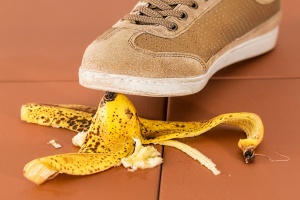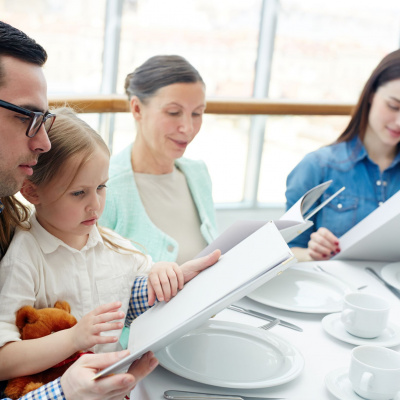Preventing Slips, Trips, and Falls in the Kitchen
Slips, trips, and falls are among the most common workplace accidents in restaurant and food service operations. In fact, the National Safety Council estimates that over 25,000 slip and fall accidents occur at restaurants across the United States. For restaurants, these kinds of accidents are not only detrimental to your employees but expensive. Workers compensation claims can result in over $2,000 per claim for a restaurant—and all that adds up when it comes to preventable incidents.
In a restaurant or food service operation there are many places where these kinds of accidents can occur.
- Wet or greasy floors, Dry floors with wood dust or powder
- Uneven walking surfaces
- Polished or freshly waxed floors
- Loose flooring, carpeting or mats
- A transition from one floor type to another
- Missing or uneven floor tiles and bricks
- Damaged or irregular steps; no handrails
- Sloped walking surfaces
- Shoes with wet, muddy, greasy or oily soles
According to the National Safety Council, and the Bureau of Labor Statistics, slip, trip, and fall accidents / incidents result in 15% of all accidents making this safety issue the 2nd leading cause of injury in the workplace and resulting in $15 billion in workers compensations claims yearly.
So how do you keep your employees safe? Consider practicing these 3 safety tactics.
Keep all areas neat, clean and tidy
In a busy kitchen with minimal space, it can be easy to go from the lunch rush to the dinner rush and let things get unorganized. As people switch shifts and change stations and your team gets in the weeds, little things like spills can seem insignificant amongst the chaos of orders coming in. However, a simple leak from the ice machine can turn hazardous in just a moment. Take for instance, this story of a 16-year-old employee who flash fried her arm during a slip. According to the Health and Safety Executive board, “She slipped on water leaking from an ice-making machine and instinctively put out her hand to break her fall. Unfortunately, her hand went into the deep fat fryer containing oil at a temperature of 360°F and she sustained severe burns to her left hand and forearm.”
Giving employees extra training on slip procedures, empowering management to ensure proper daily cleaning procedures, and teaching staff on how to clean their stations—from fry area to sink duty—is essential to continue to avoid these costly and dangerous safety situations.
Communication
Making sure you train your team to announce when they are walking with hot or sharp objects, announce their presence, and also to practice ergonomics and walk with purpose can help minimize collisions and accidents. According to Modern Restaurant Management, “Be aware of surroundings and let other chefs know if you’re walking around the corner by yelling “corner” – behind someone “behind” or “hot behind” when moving with something hot. When carrying hot items add “hot” and sharp items ‘sharp.’”
Proper Attire
While chef coats and shoes may seem aesthetic to your diners and front of house, operators and chefs understand that attire is as much as a safety issue as a necessity. For example, consider purchasing slip resistant shoes for your team, like Skechers slip-resistant shoes. These shoes are lightweight, comfortable, and designed to reduce slips, trips, and falls thanks to an ASTM-rated slip-resistant outsole that offers enhanced grip on wet surfaces in kitchens and front of house over spills.
Want to learn more about our Skechers Program? click here






